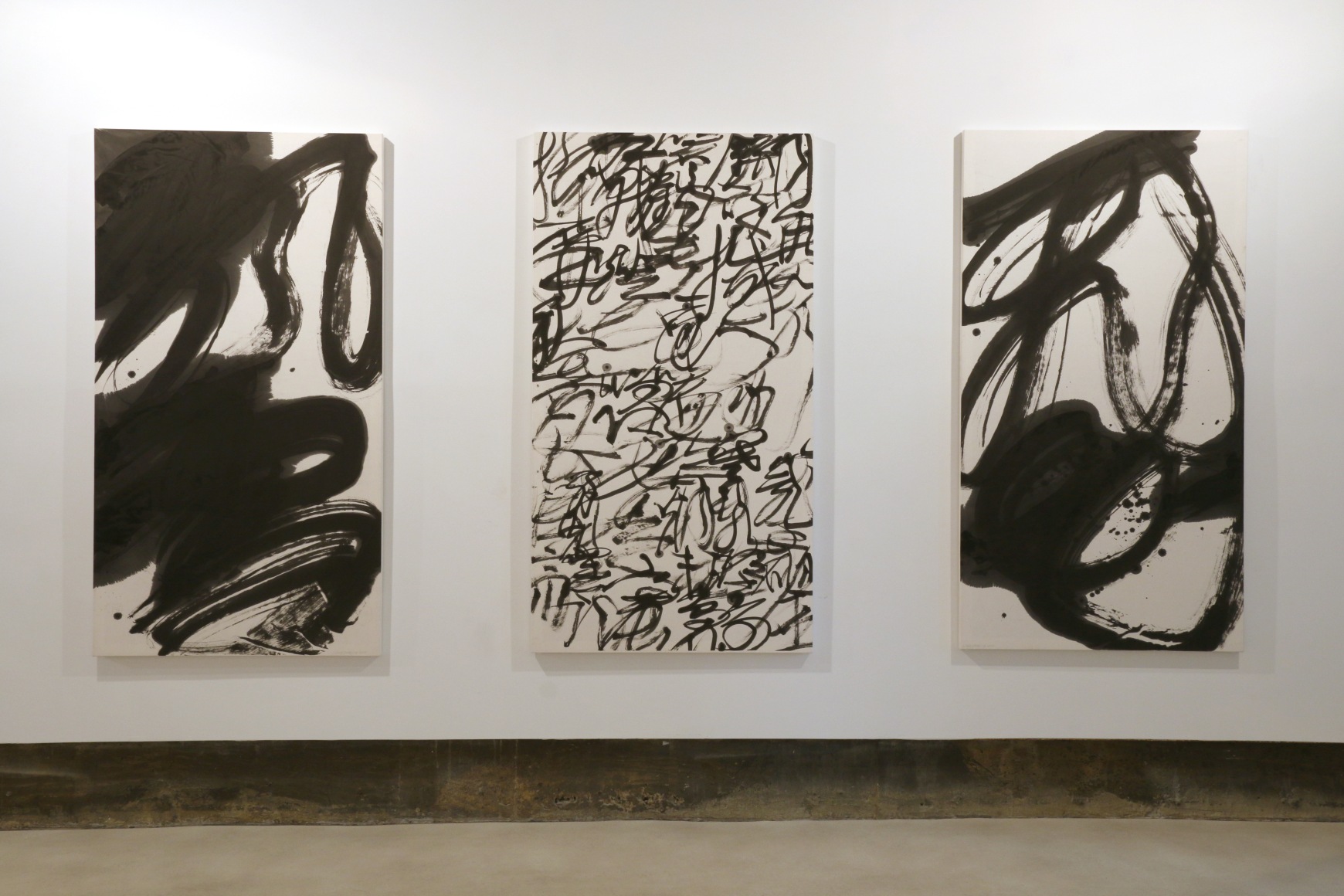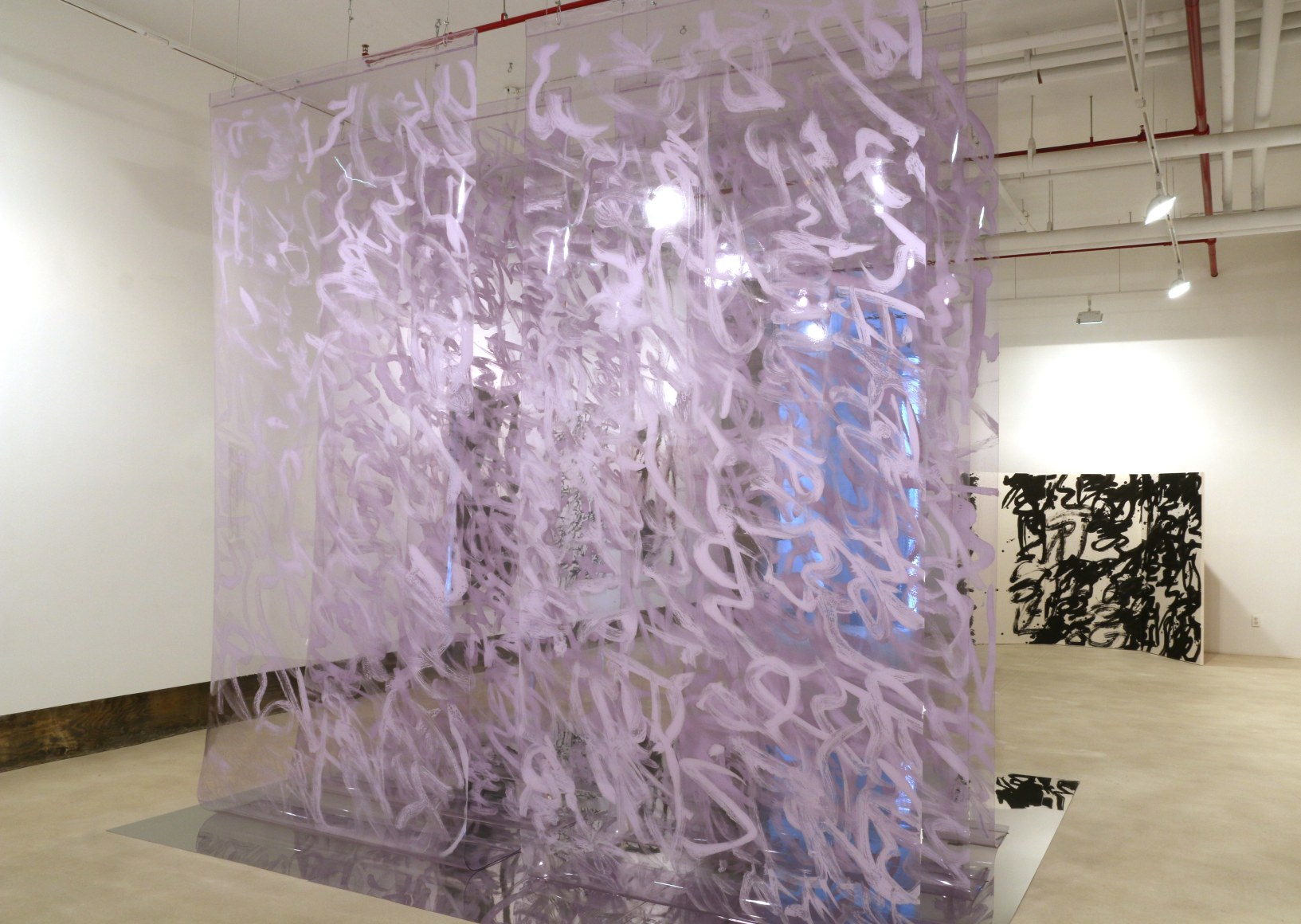Chambers Fine Art is pleased to announce the opening on September 12, 2015 of Wang Dongling: New Works. Wang Dongling (b. 1945 in Rudong, Jiangsu Province) is currently Director of the Modern Calligraphy Study Center at the National Academy of Fine Arts, Hangzhou, China and is one of China’s foremost living calligraphers. Calligraphy is one of the oldest living art traditions in the world and Wang has been intimately associated with it since early in his career, studying with the master Lin Sanzhi (1898-1989). It was from the classical training he received under Lin that he acquired the confidence to experiment with ways in which the calligraphic stroke might be liberated from the simultaneous conveyance of meaning.
This tendency became even more pronounced during the three years he spent as a visiting professor at the University of Minnesota and the University of California, Santa Cruz between 1989 and 1991 when he was first exposed to contemporary Western painting. Although never directly influenced by Western abstraction, Wang was certainly affected by the scale of much of what he saw and the willingness by American and European artists of the 1950s and 1960s to take risks, never more pronounced than in the break-through works of the Abstract Expressionists. As an acknowledged master of this ancient means of expression, Wang is capable of working in styles that encapsulate the history of calligraphy ranging over thousands of years, from the traditional transcriptions in cursive script of classical texts to an entirely abstract mode. During the recent exhibition Ink Art: Past as Present in Contemporary China at the Metropolitan Museum of Art, New York in 2013-14, Wang gave a public demonstration of his most flamboyant means of expression. Dipping his massive brushes into vats of ink, he concentrated for a moment before stepping onto large sheets of paper spread on the floor, stepping nimbly into the crucial empty spaces between his powerful brush strokes.
In the new body of works dating from 2015 in the present exhibition, Wang has achieved a new level of freedom of expression. Although they refer to poems and texts from the Tang and Song dynasties, sometimes just focusing on several characters, the meaning resides in the unmistakable character of Wang’s calligraphy. Whether nearly filling the sheet of paper or canvas with dense accumulations of brush strokes or less densely applied skeins of strokes of varying degrees of intensity, Wang’s calligraphies are immediately recognizable. In a discussion of this form of calligraphy, critic Gao Shiming has observed that “writing becomes pure trace. Thus the corporality and the gesture of writing becomes the essence.”
Contrasting with the traditional medium of the works in ink on paper and canvas will be a new series of works in acrylic on polyvinyl, in which the transparent nature of the ground creates a new spatial dimension for the artist’s calligraphy. The skittering traces of Wang’s calligraphy exist not in the fictive space of his works on paper but in the environment in which the spectator views them and are consequently affected by changes in light and other chance occurrences. The artist will give a demonstration of his calligraphy in acrylic on polyvinyl at the openingreception September 12th.
Among many others, Wang’s work is included in the collections of the Metropolitan Museum of Art, New York; the Solomon R. Guggenheim Museum, New York; the British Museum, London; the Palace Museum, Beijing; and the National Art Museum of China, Beijing.
王冬龄1945年出生于江苏如东,现任中国美术学院现代书法研究中心主任。他是中国最重要的书法家之一。书法是世 界上现存的最古老的艺术表现形式,而王冬龄自幼练习书法,师从林散之(1898-1989),至今已六十余年。正因为早 年打下了如此深厚的基本功,王冬龄才能够如此自信地走上一条创新之路。
作为一位知名书法家,王冬龄将书法贯穿古今。2015年展览,王冬龄的新作——乱书已上升到一个新高度。在一次就 此类书法的讨论中,评论家高士明已发表过“书写成为单纯的墨迹、痕迹与踪迹,书写的身体性和情意姿态成为核 心。”这样的言论。
与传统书法材质不同的是此次展览所用“画布”为亚克力聚脂薄膜。地上的镜面为艺术家的书法作品提供了延伸。9月 12日展览开幕当天,王冬龄身着红色衬衫和袜子,在巨幅聚脂薄膜上用丙烯进行了现场书法表演。
王冬龄的作品现已被纽约大都会博物馆、纽约古根海姆博物馆、伦敦大英博物馆、北京故宫博物院和中国美术馆收 藏。



